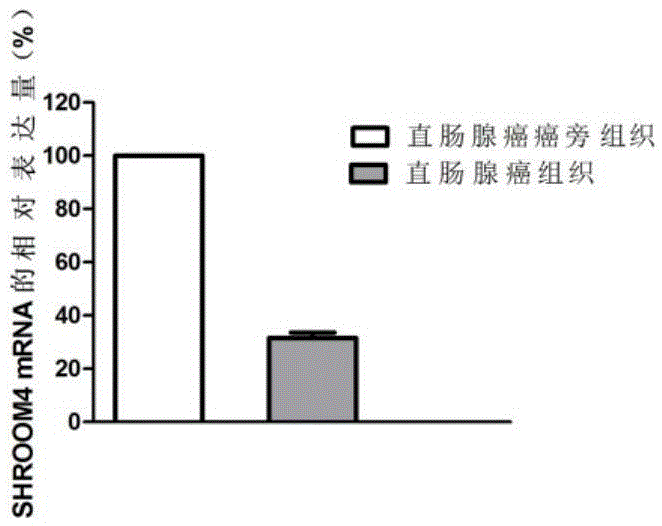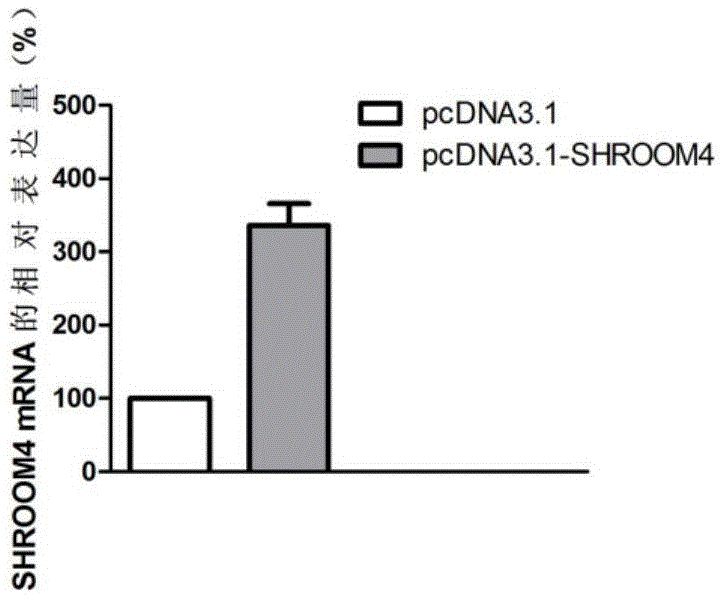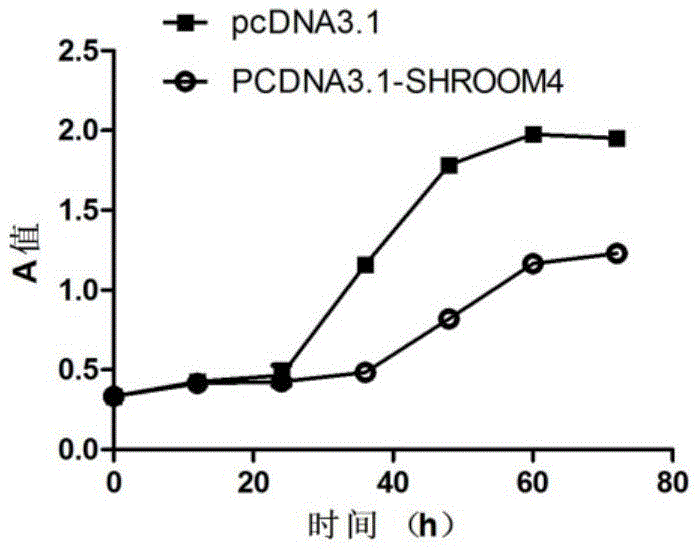Molecular marker for rectal adenocarcinoma diagnosis and treatment
A rectal adenocarcinoma and drug technology, applied in the field of biomedicine, can solve the problems of early diagnosis limitation, low sensitivity and specificity, invasiveness and high cost of rectal adenocarcinoma
- Summary
- Abstract
- Description
- Claims
- Application Information
AI Technical Summary
Problems solved by technology
Method used
Image
Examples
Embodiment 1
[0059] Example 1 Screening for gene markers associated with rectal adenocarcinoma
[0060] 1. Sample collection
[0061] Paracancerous tissue and rectal adenocarcinoma tissue samples were collected from 8 cases of rectal adenocarcinoma. The above samples are surgical resection specimens of patients with rectal adenocarcinoma, and all the above samples were obtained with the consent of the organizational ethics committee.
[0062] 2. RNA sample preparation (using E.Z.N.A. kit to operate)
[0063] The tissues obtained above were shredded, put into liquid nitrogen and ground into powder, and RNA was extracted and isolated according to the instructions in the kit. details as follows:
[0064] 1) Isolation of RNA:
[0065] A. Add RNA to tissue homogenate or cells- Reagent II 1ml;
[0066] B. Stand at room temperature for 3 minutes, add 0.2ml chloroform and shake vigorously for 15 seconds;
[0067] C. Place on ice for 10 minutes;
[0068] D. Centrifuge at 12000g for 15min...
Embodiment 2
[0084] Example 2 QPCR sequencing to verify the differential expression of the SHROOM4 gene
[0085] 1. Large-sample QPCR verification of differential expression of SHROOM4 gene. According to the sample collection method in Example 1, 70 cases of rectal adenocarcinoma paracancerous tissues and 70 cases of rectal adenocarcinoma tissues were selected.
[0086] 2. The specific operation steps of QPCR are as follows:
[0087] (1) RNA extraction
[0088] The RNA extraction procedure was as described in Example 1.
[0089] (2) reverse transcription
[0090] A. Configure the mixed solution in Microtube: OligodT (50μM) 1μl, dNTP mixed solution (10mM) 1μl, RNA template 5μg, add ddH 2 0 to 10 μl, mix well;
[0091] B. Carry out denaturation and annealing reactions on the PCR instrument according to the following reaction conditions: after 5 minutes at 65°C, place it on ice immediately;
[0092] C. Prepare the following reverse transcription reaction solution in the above-mentioned ...
Embodiment 3
[0111] Overexpression of embodiment 3 SHROOM4 gene
[0112] 1. Cell culture
[0113] Human rectal adenocarcinoma cell line HRC-99 was cultured in RPMI1640 medium containing 10% calf serum and 1% P / S in an incubator at 37°C, 5% CO2, and 90% relative humidity. Change the medium once every 2-3 days, and use 0.25% EDTA-containing trypsin for routine digestion and passage.
[0114] 2. Overexpression of SHROOM4 gene
[0115] 2.1 Construction of SHROOM4 gene expression vector
[0116] Amplification primers were designed according to the coding sequence of the SHROOM4 gene (as shown in SEQIDNO.1), and the primer sequences were as follows:
[0117] Forward primer: 5'-CCGAAGCTTGCCACCATGGAGAACCGGCCTG-3' (SEQ ID NO.7)
[0118] Reverse primer: 5'-CGGGCGGCCGCGAAATTGCTGGGCCCCA-3' (SEQ ID NO.8)
[0119] The coding sequence of the full-length SHROOM4 gene was amplified from the cDNA library of adult fetal brain (clontech company, product number: 638831), and the above cDNA sequence was in...
PUM
 Login to View More
Login to View More Abstract
Description
Claims
Application Information
 Login to View More
Login to View More - R&D
- Intellectual Property
- Life Sciences
- Materials
- Tech Scout
- Unparalleled Data Quality
- Higher Quality Content
- 60% Fewer Hallucinations
Browse by: Latest US Patents, China's latest patents, Technical Efficacy Thesaurus, Application Domain, Technology Topic, Popular Technical Reports.
© 2025 PatSnap. All rights reserved.Legal|Privacy policy|Modern Slavery Act Transparency Statement|Sitemap|About US| Contact US: help@patsnap.com



